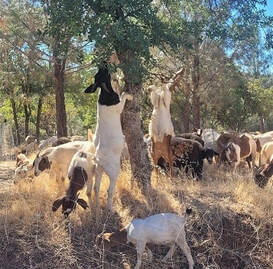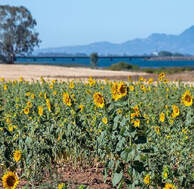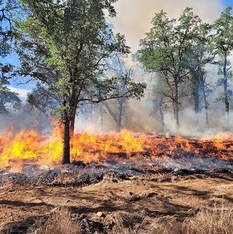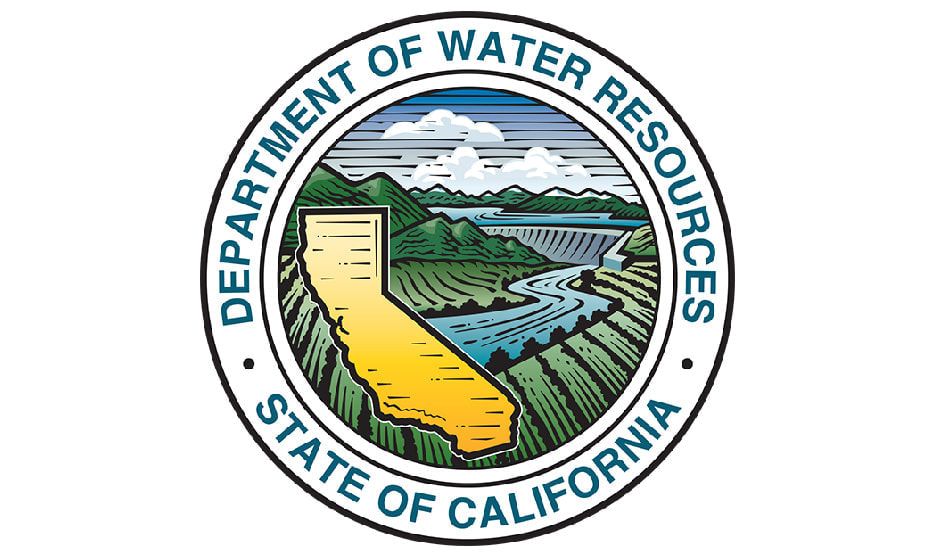 January 29, 2021 Wildfire Impacts on Water Quality In late 2020, several members of the multi-agency “Watershed Working Group”, led by the California Governor’s Office of Emergency Services (CalOES), conducted targeted monitoring of rivers, lakes, and other surface waters in the North Complex burn area and downstream. The Central Valley Regional Water Quality Control Board (Water Board), California Department of Water Resources (DWR), and the California Department of Fish and Wildlife (CDFW) collected and tested samples of surface waters throughout the North Complex Fire’s burn scar in Butte and Plumas counties. Results revealed some contaminant levels are elevated, but are lower than anticipated. The Water Board issued a news release today stating these elevated results are not impacting drinking water treatment facilities nor the quality of drinking water. While major wildfires often lead to subsequent water quality challenges in lakes, streams and other waterways, the lower than expected levels of contaminants could be linked to the relatively dry winter months in 2020. Water testing will continue and the Watershed Working Group will report results in the weeks ahead. The Water Board will alert the public if results show water quality may be further impacted. Photo: DWR water quality experts collect water samples at Lake Oroville Flood After Fire Preparedness Risks for mud and debris flows into communities and homes downslope of areas burned by wildfire are increased when precipitation events occur. In normal conditions, trees, shrubs, grass, and other protective groundcover allow rainfall to infiltrate into the soil. In addition to removing vegetation, a wildfire’s extreme heat can bake the soil, further preventing water penetration. Due to these changes, even a small storm system in burn scar areas can cause flash flooding and lead to mud and debris flows. It is important to stay alert and be prepared before flooding occurs. Being ready means knowing when to evacuate. Get the latest information from the National Weather Service at www.weather.gov – just enter your city or zip code. More information on flood after fire can be found in this short video as well as on the DWR website. Oroville Recreation Advisory Committee to Meet The Oroville Recreation Advisory Committee (ORAC) will meet Feb. 5. Due to the COVID-19 pandemic, the meeting will not be open to the public to protect public health. ORAC was established by the Federal Energy Regulatory Commission (FERC) to review and provide recommendations regarding the DWR Recreation Plan for the Lake Oroville State Recreation Area. To obtain a summary of the meeting, send a request to [email protected].  Oroville Recreation The California Department of Parks and Recreation (CA Parks), in compliance with the modification for the Greater Sacramento Region’s COVID-19 public safety restrictions, has opened Lake Oroville State Recreation Area (LOSRA) campgrounds at Bidwell Canyon, Loafer Creek, including the Equestrian Campground, and the Lime Saddle Campground. Enroute camping at the North Forebay and Spillway facilities is permitted. Group camping remains closed. Reservation capability does not open until April and camping sites will be allocated on a ‘first come-first serve’ basis. The Potters Ravine and North Fork trails are open for use. CA Parks encourages users to remain on the trails and assessments by CA Parks staff of trail safety will continue through the winter. Additionally, day use facilities at Foreman Creek, Stringtown, and Enterprise, damaged by the September North Complex Fire, are now open to the public. The Lake Oroville Visitors Center remains closed. Visit the California Parks Lake Oroville State Recreation Area (LOSRA) webpage for current information on facility status as well as current requirements to protect public health during the COVID-19 pandemic. Information about recreation facilities can be found in DWR’s interactive map on the Lake Oroville Recreation webpage. For information about the Oroville Wildlife Area, including the Thermalito Afterbay, visit the California Department of Fish and Wildlife webpage. Photo: Equestrian campground at LOSRA's Loafer Creek Recreation Area  California Conservation Corps Constructs Fish Habitat from Recycled Christmas Trees DWR and the California Conservation Corps (CCC) have completed constructing fish habitat structures at Lake Oroville and the Thermalito Afterbay using over 950 recycled Christmas trees. The trees were collected by Chico Boy Scout Troop 2 and the Biggs 4-H Club and delivered to DWR by Recology, a local waste management company. The habitat structures of stacked Christmas trees were created by threading wire cable through CCC-drilled holes in the trunks and anchoring the cable to the lakebed in various locations. Anchoring the trees allows them to stay submerged as the lake’s water level rises from winter storm and snowmelt inflows. The structures provide juvenile fish safe refuge, improving fisheries and recreational fishing opportunities. For over 25 years, DWR has worked with local groups to construct fish habitat structures, which is one of the longest continuously running fish habitat improvement programs in the State of California. Find more information on the project at DWR Updates. Photo: California Conservation Corps members anchor recycled Christmas trees to Lake Oroville's lakebed Current Lake Operations The elevation of Oroville’s reservoir is about 697 feet elevation and storage is about 1.23 million acre-feet, 35 percent of average. Currently, in the Northern Sierra Basin, rainfall is below average, at 51 percent of normal for this time of year and snowpack is also below average at 64 percent of normal. Precipitation is forecast through the middle of the first week of February with dry conditions afterwards. The total releases to the Feather River continues to be at 1,250 cfs to conserve storage in Lake Oroville. The Feather River flows consist of 800 cfs down the Low Flow Channel through the City of Oroville, and 450 cfs from the Thermalito Afterbay Outlet (Outlet) for a total of 1,250 cfs for the Feather River’s high flow channel downstream of the Outlet. Additional flow and visible increases in the elevation of the Feather River are due to significant runoff from this week’s storms. The public can track precipitation, snow, reservoir levels, and more at the California Data Exchange Center at www.cdec.water.ca.gov. Lake Oroville is identified as “ORO”. All data as of midnight 1/28/2021 ### Know someone who would like to receive Community Updates? They can email their request to [email protected]. Comments are closed.
|
Archives
May 2024
Categories
All
|


 RSS Feed
RSS Feed